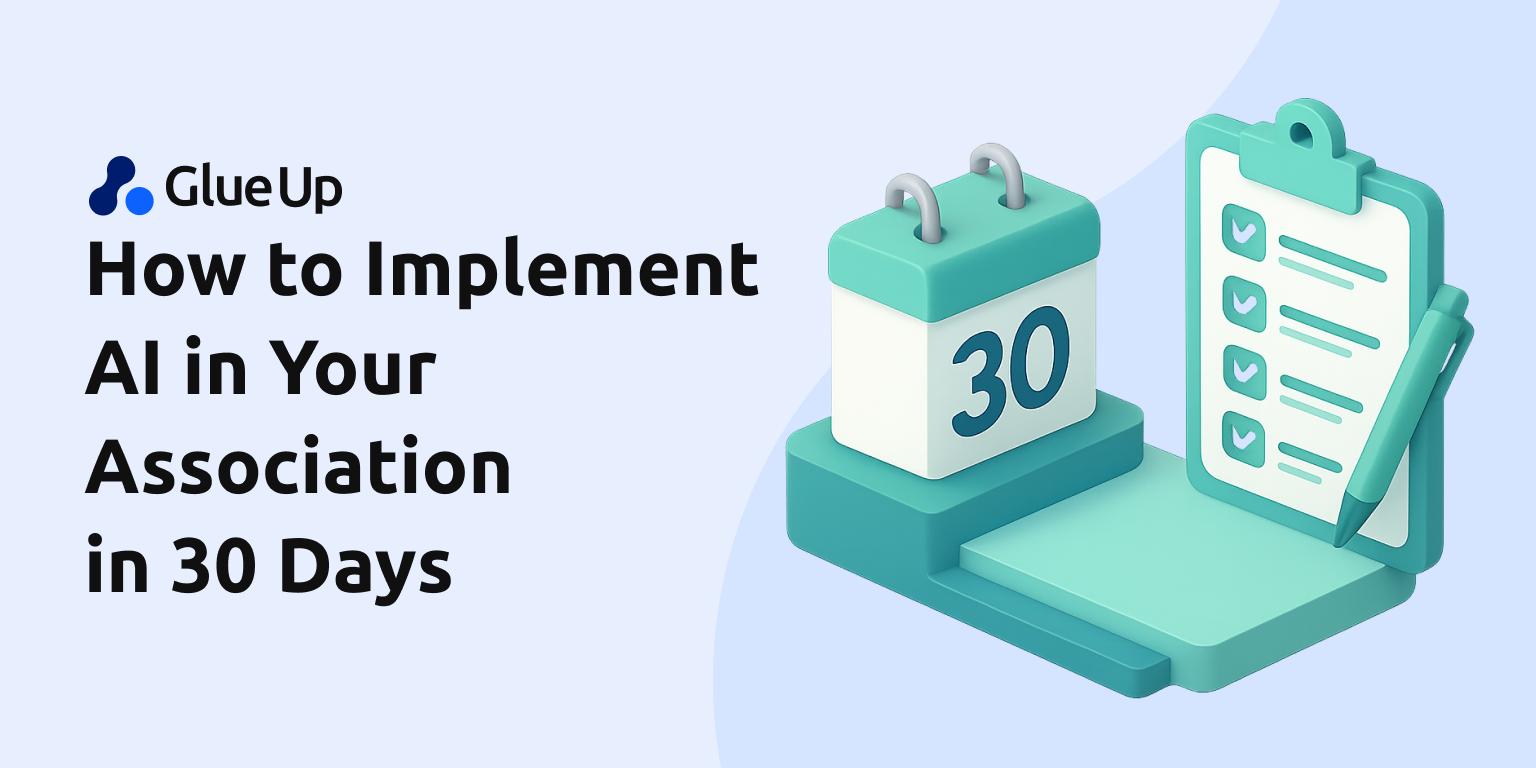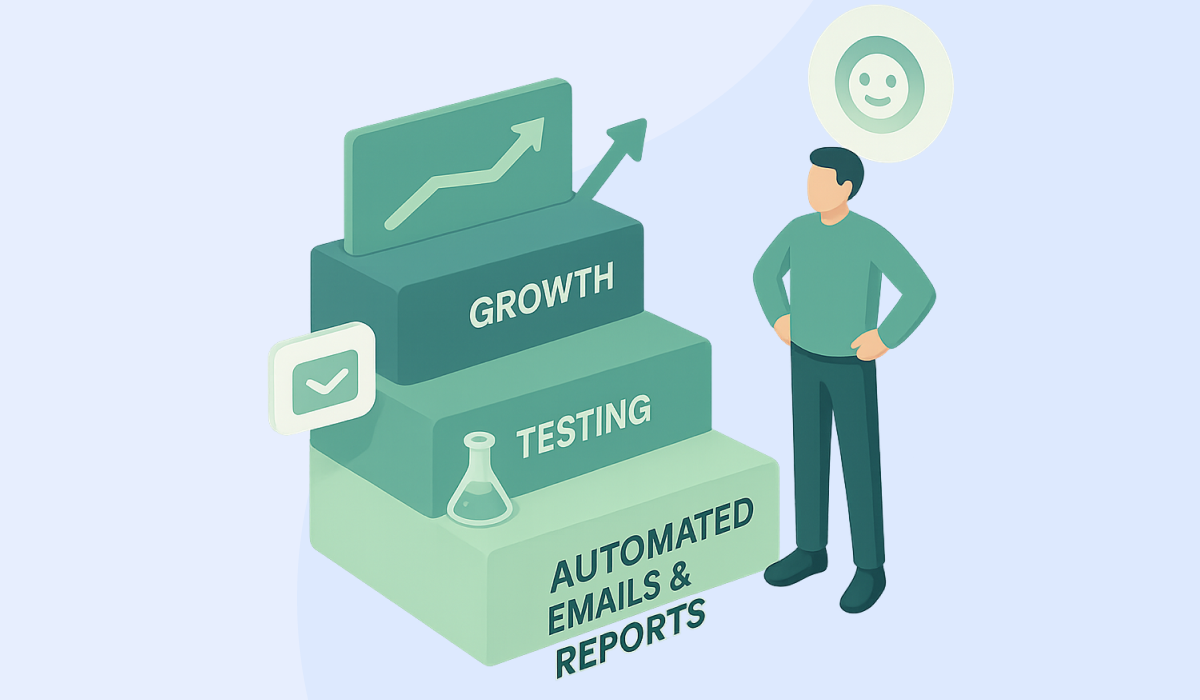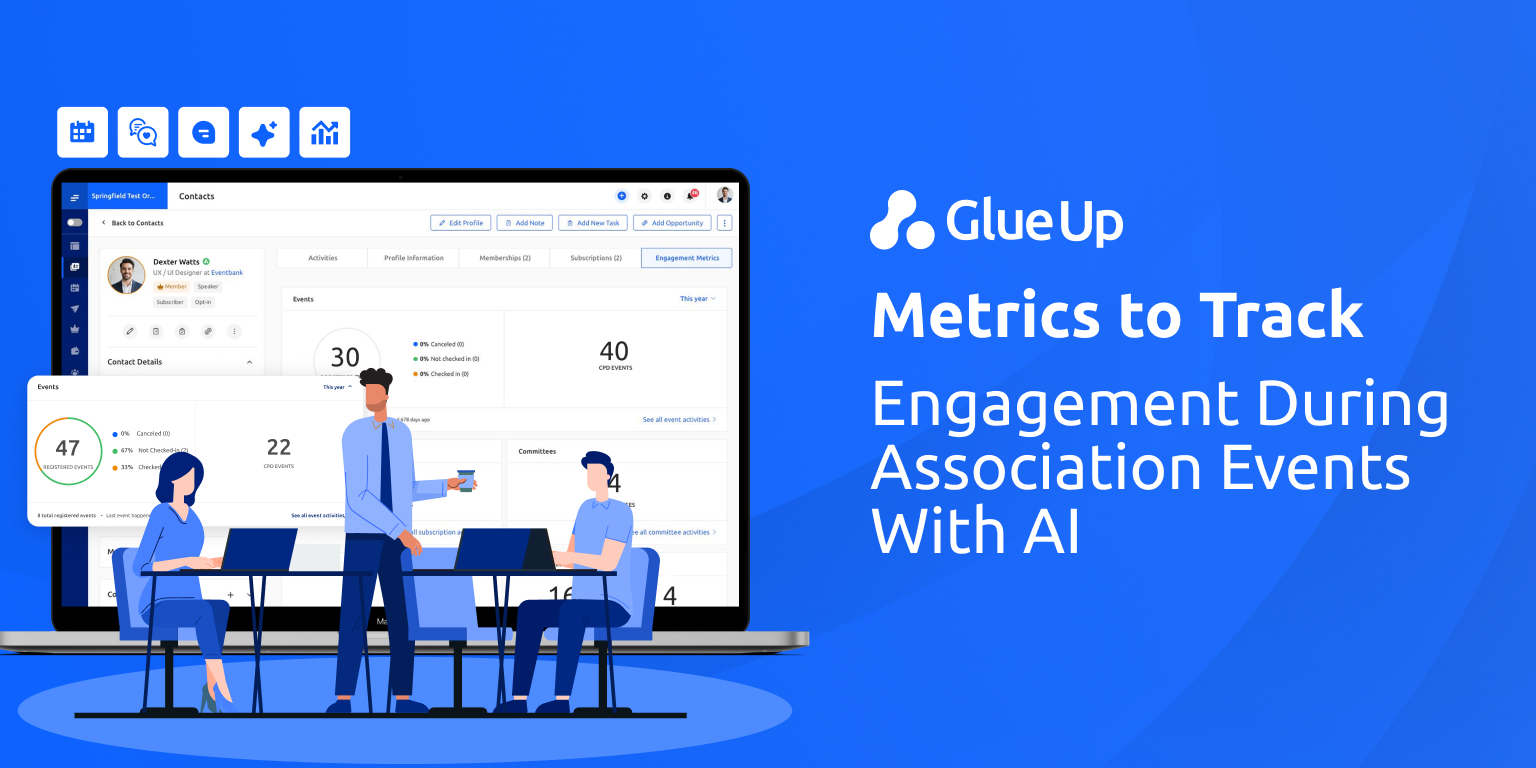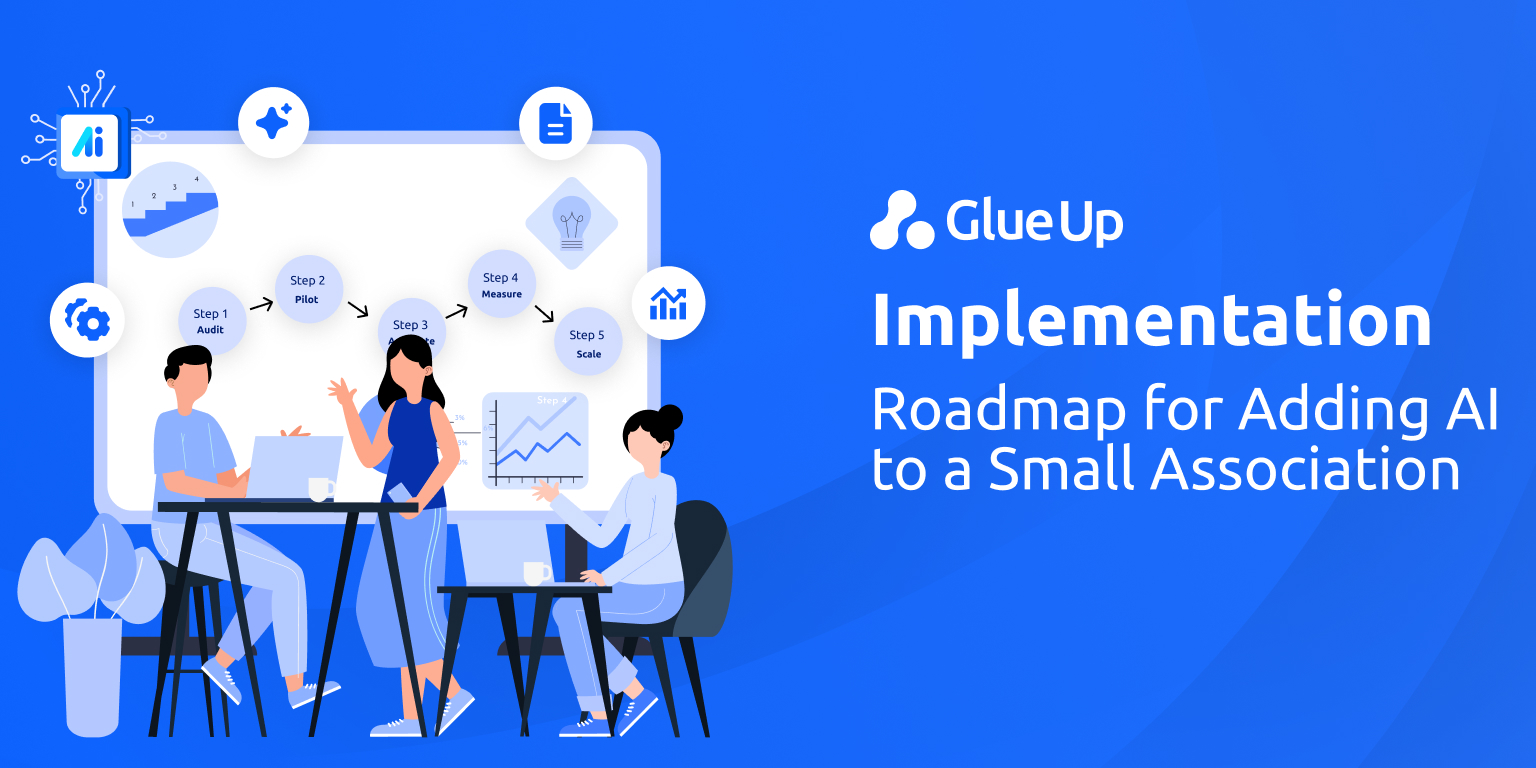
AI is all around the place, and you may feel that you are missing out on something big. No doubt, AI has cemented its place, and for associations, it's essential to leverage AI for tasks, but it's not something that can be done instantly.
It's a gradual process; you need to implement it systematically, and there's a procedure for it that you may not be aware of, but we are, and we'll share it with you in this blog post.
It's a simple 30-day guide, and by following it, you will gain all the insights on how to implement AI in your member organization, even if you haven't used AI before.
Why Associations Can’t Afford to Ignore AI
In case you still wonder why it’s important to have AI in the first place, here’s the short answer: your members expect faster, smarter, and more personalized experiences, and manual systems can’t keep up anymore.
And the stats back it up: 82% of global companies are either using or exploring the use of AI in their organization.
Associations today are under growing pressure to deliver more value with fewer resources. Improving engagement, boosting retention, and simplifying operations are no longer optional. AI is the foundation of what a modern AI organization should be.
Ignoring AI results in:
- Member behavior becomes harder to track
- Key touchpoints for renewals or upgrades are missed
- Staff get overwhelmed with repetitive tasks
- Leadership makes decisions without timely or complete data
- Associations that embrace AI are already seeing the difference
- Personalized experiences lead to stronger member engagement
- Automation frees up time for high-impact work
- Predictive insights support better retention strategies.
Being an AI organization isn’t about replacing people; it’s about giving your team smarter tools to serve members more effectively and grow your impact.
Week 1: Assessing Your Readiness for AI
We’ve broken down the 30-day process into four weeks, or you could say, four clear steps. Week 1 is all about getting started the right way. During this first week, your focus should be on assessing your organization’s readiness for AI.
Here's how you do it:
1. Evaluate Your Tech Stack
80% of organizations agree that inadequate or outdated technology is holding back innovation. To avoid becoming part of that number, it’s important to understand what tools you're already using and how well they’re working together.
Ask Yourself:
- Is your CRM fully integrated with your event and email tools?
- Are staff manually entering the same data in multiple places?
- Do you rely on spreadsheets to track member engagement?
- Are your current systems capable of supporting AI features, such as automation or predictive insights?
AI doesn’t work in isolation. It needs connected, reliable data. If your systems are outdated or disconnected, AI can’t deliver real value.
What to do:
- List every tool your team uses across membership, communications, and events
- Check where the data gets duplicated or delayed
- Review whether your tools offer real-time syncing or automation
- Consider solutions (like Glue Up) that bring everything under one roof with built-in AI capabilities
- Eliminate redundant tools that don’t scale with your growth
Laying the right tech foundation now sets the stage for every step you take with AI to be faster, smarter, and more impactful.
2. Identify Member Engagement Pain Points

52% of executives believe lack of engagement is the primary reason members don’t renew their membership. If you want your members to renew, you need to understand where engagement is actually breaking down.
That means looking beyond email open rates and event attendance to uncover the friction points that frustrate members, or quietly push them away.
Identify:
- If new members are disengaging after sign-up
- If members ignore your event invites or emails
- If renewals are dropping without clear warning signs
- If it's hard to tell who’s engaged and who’s at risk
The more specific your pain points, the more targeted your AI solutions can be. Whether it’s recommending events, automating follow-ups, or flagging at-risk members, AI works best when it has clear problems to solve.
What to do:
- Review past engagement trends, where do drop-offs happen most often?
- Ask your team where they’re spending the most time trying to reconnect with members.
- Look at renewal patterns, who's leaving, and when?
- Talk to your members, what do they find valuable, and what’s missing?
Once you understand what’s not working, you’ll be ready to use AI to turn those gaps into opportunities.
Week 2: Choosing the Right AI Tools
Once you’ve done your assessment homework, it’s time to find the right AI tools that align with your goals, resources, and member needs. This step isn’t about chasing the flashiest tech; it’s about choosing tools that solve real problems and fit within your existing operations.
Here’s what to consider:
- The tool you're choosing, does it work with your current systems? If it doesn’t integrate with your CRM, event platform, or member database, it’ll just add more complexity.
- Is it designed for member-based organizations? Tools built for e-commerce or general business may not serve the specific needs of associations, chambers, or non-profits.
- What specific problem does it solve? Whether it’s smarter follow-ups, automated onboarding, or predictive engagement scoring, every AI tool you choose should address a clear pain point.
- How easy is it for your team to adopt? If it takes weeks of training or feels too technical, your team won’t use it consistently.
Pro tip: All-in-one association management solutions like Glue Up already include AI capabilities across CRM, events, email, and membership workflows, so you don’t have to piece together multiple tools.
Choosing the right tools now prevents wasted time later and sets you up for a smarter, more scalable AI strategy.
Week 3: Integrating and Testing AI Tools
You’ve done the assessment. You’ve chosen the tools that suit your organization. Now begins the real thing: integration and testing, because 90% of IT leaders say it’s tough to integrate AI with existing systems.
That’s why this is the most important stage. It shows how well those AI tools actually perform, not just in theory, but in your day-to-day operations.
Here’s what to focus on:
- Start small: Don’t try to roll out everything at once. Begin with one use case, such as automated follow-ups or engagement scoring, and see how it performs in a real scenario.
- Track results early: Set a clear baseline before you launch, so you can measure whether the tool is truly saving time, improving communication, or increasing engagement.
- Gather team feedback: Ask your staff if the tool is helping or creating friction. Sometimes the issue isn’t the AI, it’s the workflow around it.
- Check data flow and system compatibility: Ensure the AI tool integrates well with your existing platforms and that data syncs properly across systems.
- Be ready to iterate: AI tools often improve over time, especially when trained on your data. The testing phase isn’t just about judging performance; it’s about learning how to adjust and optimize.
The goal this week isn’t perfection, it’s progress. You’re setting the foundation for smarter automation, better insights, and less manual work in the long run.
Week 4: Measuring Success & Scaling Your AI Strategy

Now we’re in the last step of AI implementation, and this is where you find out if all the effort has been worth it. After integrating and testing your AI tools, it’s time to measure what’s working, what needs adjusting, and how to build on early success.
Here’s what to focus on:
- Track impact, not just activity: Don’t just look at how many emails were sent or how many workflows were triggered; measure whether those actions led to actual outcomes, such as increased engagement, faster follow-ups, or higher retention.
- Compare results to your baseline: Look back at your Week 1 benchmarks. Are your tools saving time? Are you seeing better member responses or clearer engagement signals?
- Get team feedback: Ask your staff what’s improved, what’s still manual, and what’s become easier. Internal adoption is also a success indicator.
- Document lessons and wins: Every test, good or bad, teaches you something. Log what worked, what didn’t, and what you'd do differently next time.
- Scale what works: If you've seen success using AI for follow-ups, try expanding it to renewals or event recommendations. Start layering AI across more touchpoints gradually.
AI implementation doesn’t stop after 30 days; it continues to evolve. But by this stage, you’ll have a solid foundation to build on, backed by data, team experience, and clear results.
Real Examples of Associations Successfully Using AI
Having AI is truly impactful, and we’re not just claiming it. Associations that have adopted AI are already experiencing massive shifts in how they operate, engage members, and drive value.
Let’s take a look at two real examples:
1. Missouri State Teachers Association (MSTA)
MSTA integrated Betty’s Tillie AI assistant with PropFuel to boost engagement in advocacy campaigns. By delivering tailored messages to members, they saw a 96% participation rate in legislative action campaigns, saving $7,000 annually while increasing advocacy engagement by 80%.
2. One Acre Fund
One Acre Fund used AI to personalize communication with its clients, resulting in an 18% increase in loan repayment rates and reduced budget expenses. As a result, the organization was able to serve more smallholder farmers in Kenya, Rwanda, Uganda, Burundi, and Malawi.
Next Steps: Becoming an AI-Forward Association
At this point, you’ve assessed your systems, identified key pain points, tested tools, and seen what AI can do for your organization. This isn’t the end, it’s the beginning of operating as a truly AI-forward association.
Here’s what comes next:
- Build on what’s already working: If AI tools improved follow-ups or engagement scoring, they could be expanded into areas like renewals, onboarding, or event recommendations.
- Create a culture that embraces AI: AI isn’t just a tool; it’s a shift in how your team thinks and works. Keep your staff involved, offer ongoing training, and encourage feedback as you scale.
- Let performance data guide your direction: Every automation, insight, and interaction adds to your understanding of what members want. Use that data to drive more informed decisions.
- Stay proactive about innovation: AI tools are evolving quickly. Remain open to testing new features and platforms that align with your mission and goals. Avoid slipping back into outdated, manual routines.
Becoming an AI-forward association is an ongoing process. When AI is treated as a long-term investment, not just a one-time upgrade, you create space for smarter growth, deeper engagement, and measurable results.
You’ve made the shift, now keep the momentum going.


